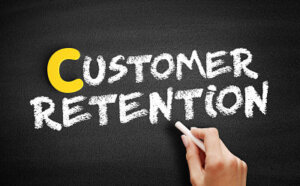Change like we can’t imagine (yet)
August 26, 2020
 Voice technology is changing everything. I know that’s a ridiculously bold statement. But let’s go back in time.
Voice technology is changing everything. I know that’s a ridiculously bold statement. But let’s go back in time.
It was about 1989 and I was walking through an airport. I spotted a man on one of those bag phones and thought, “why in the world would anyone ever want to carry a phone with them all the time?” If someone had stopped me that day and said, “mobile technology is going to change everything,” I wouldn’t have believed them and I certainly couldn’t have imagined the critical role that our cell phones play in our lives today.
In fairness, voice is changing everything, at least initially, thanks to our cell phones. We’re at the caveman stage of understanding how to harness voice technology and how it will dramatically alter the way we live, work, play and communicate.
This sounds like hyperbole but we’ve been watching our world build up to this since cell phones came on the scene. As they became commonplace, another element that is critical for voice was also gaining some steam – artificial intelligence (AI).
Remember back in the 90s, when you first experienced an automated phone tree, where you were asked simple questions and based on your answers, routed through a series of pre-recorded messages? I don’t know about you, but for me, that was rarely a positive experience. I typically ended up shouting at the phone in an attempt to be understood and hitting zero as often as I needed to, to get to a human being. The natural language processing technology just wasn’t that good yet and while the intention was sound, the experience was not.
Fast forward to this past week. Using my cell phone, I was able to contact United and get a real-time update on where my lost luggage was in 37 seconds. Thanks to AI and voice technology, it was seamless, easy, and efficient. Think about the conversations you have with Siri, Alexa, or Google. And even with that huge leap forward, we’re still at the inventing fire stage of this shift.
As marketers, we are always looking at whatever is new and wondering, is it a fad? Is this just another channel? Is this something that is going to be widely adopted by my audience or industry? We’re already working with limited resources – do I need to invest in this too?
Voice, I believe, is a seismic shift, like the internet and mobile phones were. And in a way – they’re all simply the next wave of the same shift. But voice will touch everything. It is already changing SEO and search. This year, it is estimated that over 50% of all searches will be conducted by voice. The whole idea of wanting to be on the first page of a Google search result will go by the wayside because voice searches don’t offer up ten options. It offers up one. Suddenly it’s the featured snippet or nothing.
There will be a day when people going to your website can navigate through it without ever clicking on a link. How we think about our owned media, like our websites, is going to be flipped on its head.
If you aren’t learning more about voice, as a marketer you need to make that commitment. Here are two conferences worth considering:
MAICON: The first annual Marketing Artificial Intelligence Conference took place in July 2019 and although the 2020 conference has been canceled due to COVID, the dates for the 2021 conference are locked into place – July 13-15, 2021. We heard a lot about the merging of AI and voice at the first conference and the conversation is bound to grow in 2021.
Voice Summit: This event has been in existence for four years and is the largest voice-first event with over 5,000 attendees last year. They are still on track for their event, October 5-15, 2020 but keep up to date here for any changes.
Now is the time to learn and explore this new opportunity.
This was originally published in the Des Moines Business Record, as one of Drew’s weekly columns.
More








